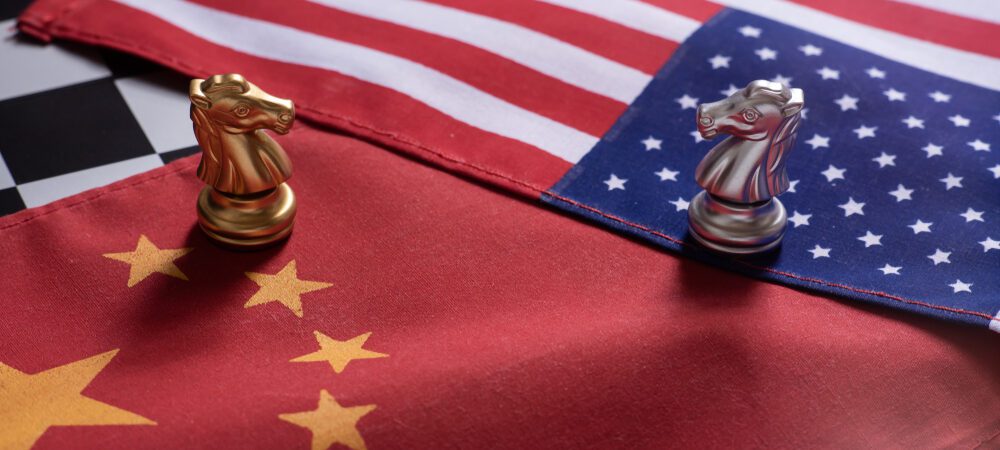A former US trade negotiator’s roadmap to brokering a deal to defuse today’s trade war.
During his election campaign, Donald Trump conveyed his interest in visiting China during his first 100 days in office. Not only has this trip not materialised, even a phone call with president Xi Jinping has proven elusive. Instead of talking, both countries have quickly escalated their tit-for-tat tariffs. While both sides technically remain open to negotiations, a roadmap for getting there does not appear to be under discussion.
Yet as both countries feel the economic fallout from their trade war, the need to get the ball rolling on official talks becomes more urgent. In November, Trump will have the opportunity to meet his counterpart in person on the margins of either the G20 meeting in South Africa, or more likely the Asia-Pacific Economic Cooperation (Apec) leaders’ meeting in South Korea. Their top advisers can — and must — start building trust and working now to sow the seeds for a Trump-Xi meeting later this year to broker a compromise between the two.
Difficult but doable
While president Trump continues to assert that the US and China are talking, Beijing steadfastly denies this claim. By all counts, the US president is more interested in resuming engagement than his Chinese counterpart. Almost 60% of Americans disapprove of the administration’s tariff policy, putting it under pressure to show it will help the economy. Meanwhile Beijing has seen Trump back down on tariffs with other countries, and has prepared for a trade war since Trump 1.0.
The fact is that each side is currently busy with other partners. Chinese leadership is reaching out to US allies, portraying Beijing as the defender of the rules-based trading system while offering commercial incentives to further integrate their economies. US negotiators are trying to finalise as many trade deals as possible during the 90-day reciprocal tariff suspension. However once these talks come to a close, US trade officials must shift their focus to China.
Their close communication with senior Chinese officials is critical to get things moving. While difficult, this is doable. US trade representative Jamieson Greer, who will participate in the Apec trade ministers meeting in May, could share a private message with his Chinese counterpart on behalf of President Trump on US interest in re-engaging. Treasury secretary Scott Bessent could call Chinese vice-premier He Lifeng to discuss a multilateral matter, like IMF reform, and use the opportunity to signal the American desire to re-engage. This could lead to teeing up a scripted call between the two leaders, with them instructing their teams to develop terms of reference for a potential deal, which could then be announced in November.
Yet the hurdle of just setting up a call underscores the lack of trust between both sides, a key element for any successful negotiation. While Mr Bessent last week said there was an opportunity for a “big deal” with China aimed at correcting longstanding structural imbalances, the Chinese are way more cautious. They worry such a “big” deal would mean pressure to reform their economy to look more like the US — a non-starter for Beijing.
A more incremental strategy with a greater chance of success is to start by addressing immediate issues of concern, while laying the groundwork for structural discussions down the road. Chinese excess capacity exports, for example, must be on any early negotiating agenda. US negotiators should urge China to adopt voluntary export restraints in specified sectors as a pragmatic step to rein in export surges. Negotiators could also revisit the unfinished work of the Phase One trade negotiations in areas like subsidies, state-owned enterprises and cloud computing. Given Mr Trump’s affection for splashy announcements, Chinese commitments to buy more US agriculture, energy and aeroplanes could be included, albeit at more realistic levels than the first agreement.
Recent downgrades to economic growth forecasts for the US, China and world as a whole — coupled with higher prices, layoffs in export industries, and supply chain disruptions — will undoubtedly incentivise both Washington and Beijing to look for off-ramps to ease tensions. By working back from a possible Trump-Xi meeting later this year, both sides can use the intervening months to lay the groundwork to get negotiations up and running.
The writer is vice-president of the Asia Society Policy Institute and a former acting deputy US trade representative.
To read this opinion piece as it was published on the fDi Intelligence website, please click here.


